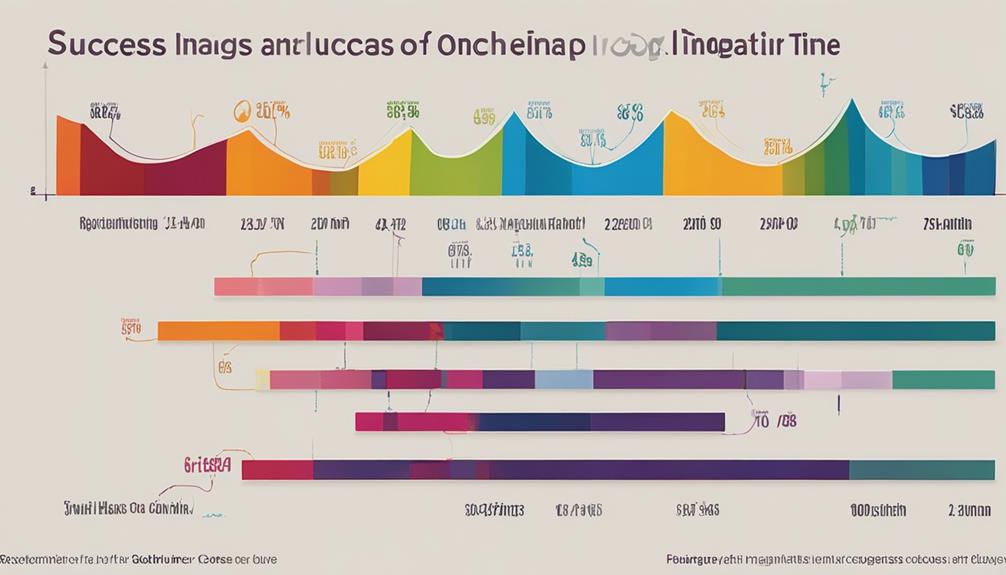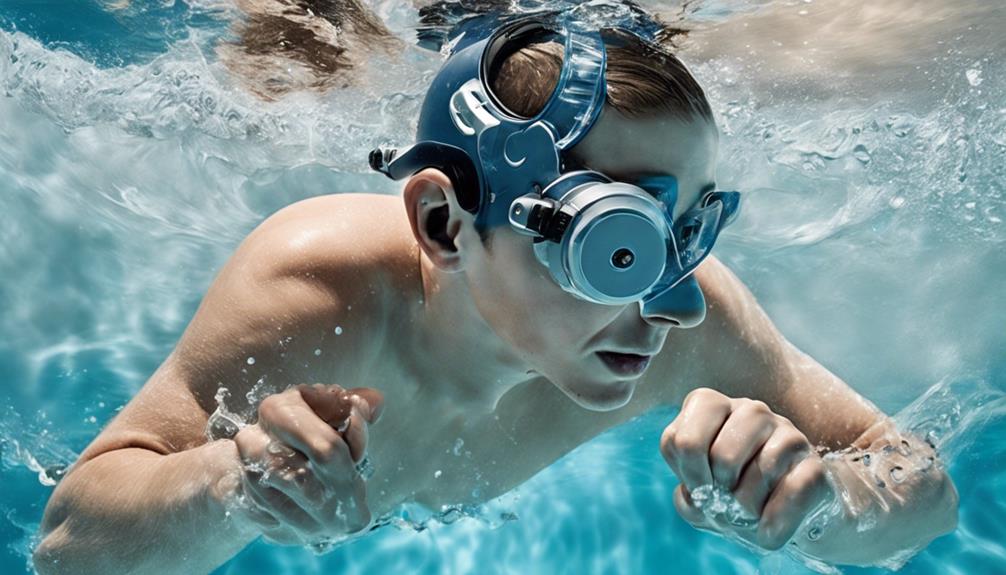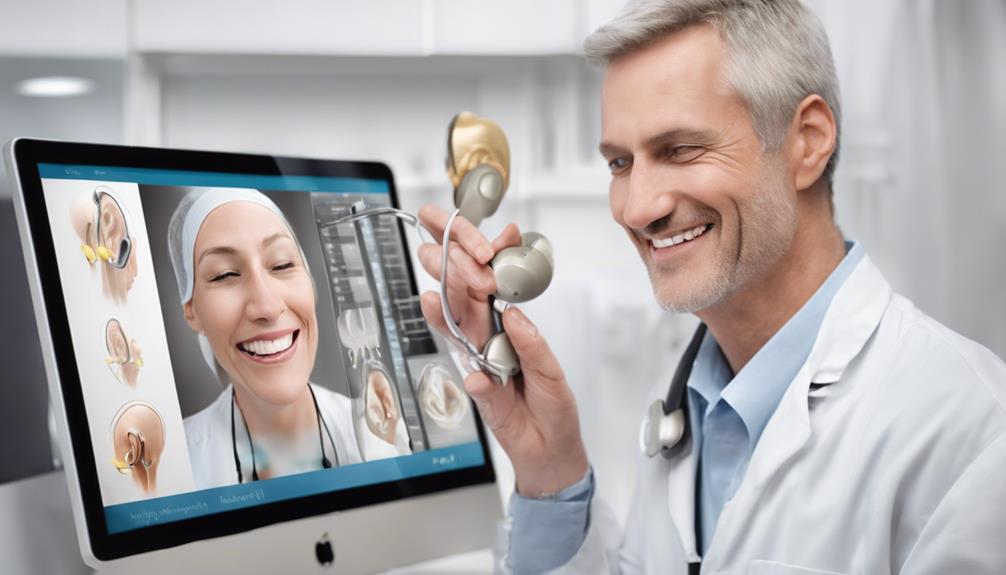Let’s explore the intriguing world of using a stethoscope with cochlear implants.
Have you ever wondered how technology can seamlessly blend with medical practice to enhance patient care?
Well, when it comes to this specialized scenario, the fusion of innovation and necessity opens a realm of possibilities.
Join us as we explore the nuances of navigating auditory assistance while engaging in the art of auscultation – it's a delicate balance that can significantly impact healthcare delivery.
Key Takeaways
- Position chest piece directly on skin for optimal sound transmission.
- Use stethoscopes with direct audio input compatibility.
- Consult audiologist for sensitivity and frequency range adjustments.
- Regularly clean and maintain stethoscope for accurate readings.
Proper Stethoscope Placement
When using a stethoscope with cochlear implants, ensuring proper placement by positioning the chest piece directly on the patient's skin is crucial. This is especially important for individuals with cochlear implants, as the magnetic components can interfere with the stethoscope if not placed correctly.
Patients who are cochlear implant candidates may have limited hearing abilities, even with the use of hearing aids, making it essential to optimize sound transmission during medical examinations. To achieve this, it's recommended to work closely with a programming audiologist who understands the intricacies of cochlear implant technology.
By using a stethoscope that has direct audio input capability, healthcare providers can ensure that the sound is efficiently transmitted to the cochlear implant processors, enhancing the patient's perception and overall experience.
Additionally, adjusting the stethoscope tubing to prevent any tugging or pulling on the cochlear implant devices is vital in maintaining patient comfort and device functionality.
Adjusting Volume and Sensitivity
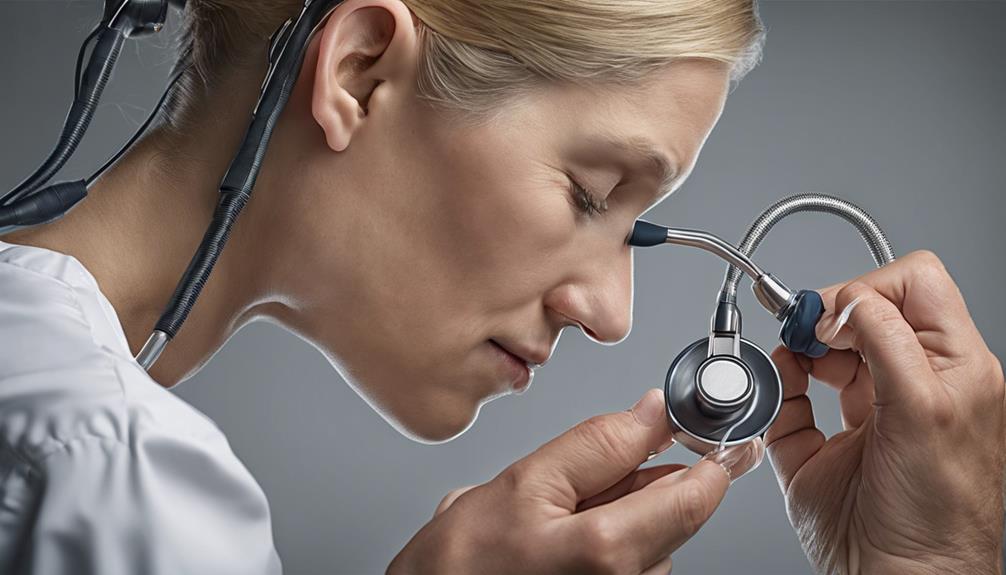
To optimize sound transmission for individuals with cochlear implants, adjusting the volume and sensitivity settings on the stethoscope is essential. When using a stethoscope with cochlear implants, it's crucial to ensure that the volume settings are adjusted to a level that's comfortable and clear for the user. The sensitivity settings should also be fine-tuned to allow for optimal sound detection without overwhelming the implant processor. Consulting with an audiologist can provide valuable guidance on setting the frequency ranges to enhance sound perception. It's important to select a stethoscope that's compatible with direct audio input to connect seamlessly with the cochlear implant processor, enabling a direct and clear sound transmission.
Experimenting with different volume and sensitivity settings is recommended to find the most suitable combination for a comfortable and effective listening experience. Regularly checking and maintaining the stethoscope is also necessary to ensure consistent performance when used with cochlear implants. By adjusting the volume and sensitivity settings accordingly, individuals can maximize the utility and benefits of using a stethoscope with cochlear implants.
Minimizing Interference With Implants
Adjusting frequency ranges by audiologists can enhance sound perception with cochlear implants, ensuring minimal interference with the implants during auscultation. When working with cochlear implant users, it's crucial to choose stethoscopes that are compatible with their devices to optimize sound transmission.
Here are some key points to consider for minimizing interference with cochlear implants:
- Specialized Stethoscopes: Utilize stethoscopes designed specifically for cochlear implant users, which can connect directly to their processors, reducing potential interference.
- Frequency Range Adjustment: Audiologists can adjust the frequency ranges on cochlear implants to enhance sound perception, making it easier to distinguish sounds heard through the stethoscope.
- Direct Audio Input Capability: Look for stethoscopes with direct audio input capability, as they can help in minimizing interference with cochlear implants by bypassing external noise.
- Resource References: Consult resources provided by organizations like the Association of Medical Professionals with Hearing Losses (AMPHL) for information on compatible stethoscopes tailored to cochlear implant users.
Cleaning and Maintaining Your Stethoscope
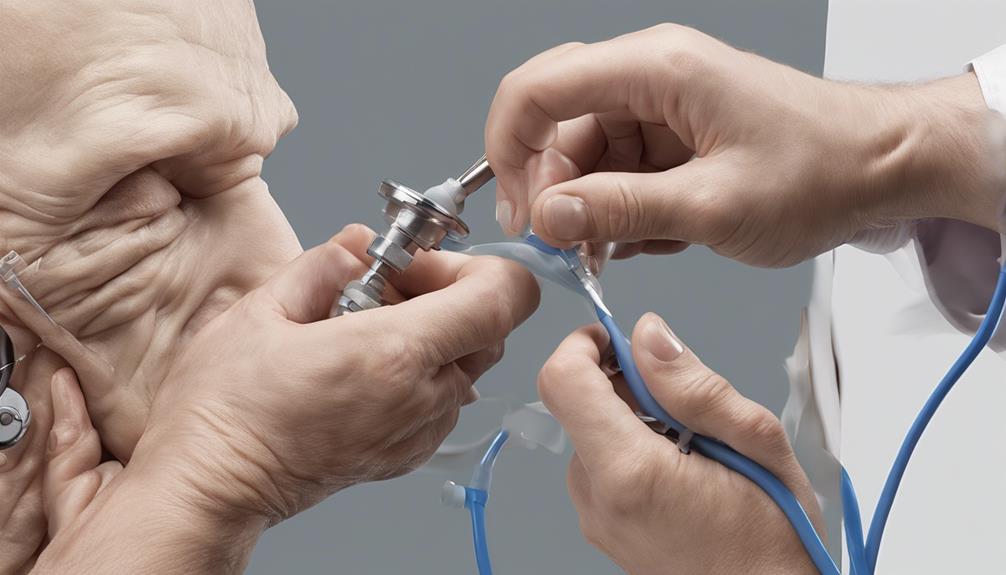
Regular maintenance and proper cleaning of your stethoscope are essential practices to uphold its functionality and prevent contamination. When dealing with medical professionals, especially those working with pediatric cochlear implantation patients who may have hearing loss, maintaining a clean stethoscope is crucial for both accurate readings and infection control. Here are some key tips for cleaning and maintaining your stethoscope:
| Cleaning Tips | Maintenance Tips |
|---|---|
| Clean with alcohol wipes | Inspect ear tips and tubing regularly |
| Avoid harsh chemicals | Replace worn-out parts promptly |
| Do not submerge in water | Store in a clean, dry place |
Following these practices will not only prolong the lifespan of your stethoscope but also ensure that it remains in optimal working condition. Additionally, always refer to the manufacturer's instructions for specific care guidelines tailored to your stethoscope model.
Practicing Regularly for Accuracy
Maintaining accuracy in auscultation skills is paramount for healthcare professionals utilizing cochlear implants. This requires regular practice to ensure proficiency in interpreting heart and lung sounds effectively.
To enhance your skills, consider the following:
- Familiarize with Stethoscope Sounds: Understand the sounds produced by your stethoscope and adjust settings to optimize sound perception with your Nucleus cochlear implant system.
- Differentiate Normal vs. Abnormal Sounds: Practice distinguishing between normal and abnormal heart and lung sounds to refine diagnostic abilities with cochlear implants.
- Ensure Proper Stethoscope Placement: Place the stethoscope correctly on the patient's body to capture clear and accurate sounds, especially vital when using specialized stethoscopes for cochlear implant users.
- Seek Feedback for Validation: Request feedback from colleagues or mentors to validate your proficiency in accurately interpreting auscultatory findings while using a stethoscope with cochlear implants.
Regular practice is essential for mastering auscultation skills, especially for healthcare professionals in the United States meeting the Food and Drug Administration's Candidacy Criteria for cochlear implants.
Frequently Asked Questions
Can You Use a Stethoscope With a Cochlear Implant?
Yes, we can use a stethoscope with a cochlear implant. Specialized stethoscopes designed to connect with cochlear implant processors help enhance sound perception for users. Most standard stethoscopes with ear buds aren't compatible, necessitating these specialized options.
Audiologists may need to adjust frequency ranges to optimize sound perception. Resources from organizations like AMPHL offer guidance on compatible stethoscopes for cochlear implant recipients, some of which have direct audio input for enhanced functionality.
How Do Deaf People Use Stethoscope?
We use stethoscopes by ensuring compatibility with our cochlear implants. Deaf individuals benefit from specialized stethoscopes with direct audio input for clear and amplified sound. Audiologists can adjust frequency ranges to optimize sound perception through the implant.
The Association of Medical Professionals with Hearing Losses (AMPHL) provides resources on stethoscopes that work well with cochlear implants. Compatibility and proper adjustments are crucial for effective stethoscope use in deaf individuals.
How Do You Wear a Stethoscope With a Hearing Aid?
First off, we make sure the hearing aid sits comfortably in the ear.
Then, we securely position the stethoscope ear tips over it to prevent feedback.
Adjusting the tubing reduces pressure on the hearing aid for accurate readings.
Longer or adjustable tubing models accommodate hearing aids better.
Testing the placement ensures clear sound transmission.
These steps help us wear a stethoscope with a hearing aid effectively during clinical assessments.
What Can You Not Do With a Cochlear Implant?
With a cochlear implant, there are certain activities to avoid to ensure its proper function. For example, swimming without waterproof protection can harm it.
Additionally, high-impact activities should be avoided to prevent damage to the implant processor. Consult healthcare professionals before undergoing MRI procedures due to potential risks.
Keep electronic devices that generate electromagnetic interference away from the implant. Extreme temperatures should also be avoided to maintain the functionality of the cochlear implant.
Conclusion
In the world of healthcare, using a stethoscope with cochlear implants may seem challenging at first. However, with the right tools and adjustments, healthcare professionals can confidently care for their patients while utilizing their implants.
Just like tuning an instrument for a perfect melody, fine-tuning your stethoscope settings can enhance your ability to listen to the subtle rhythms of the human body.
Remember, practice makes perfect, and with dedication, you can master this essential skill.


